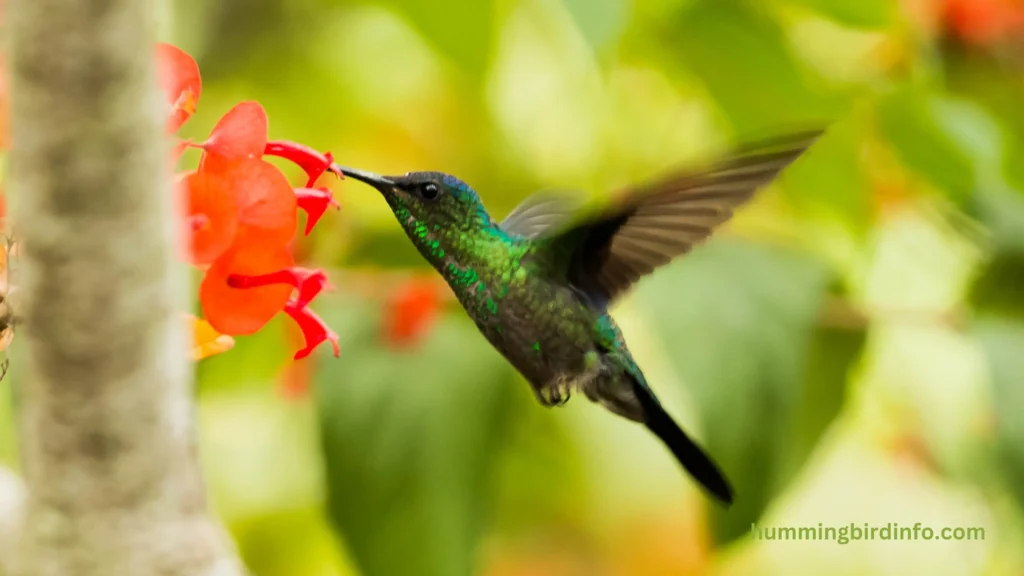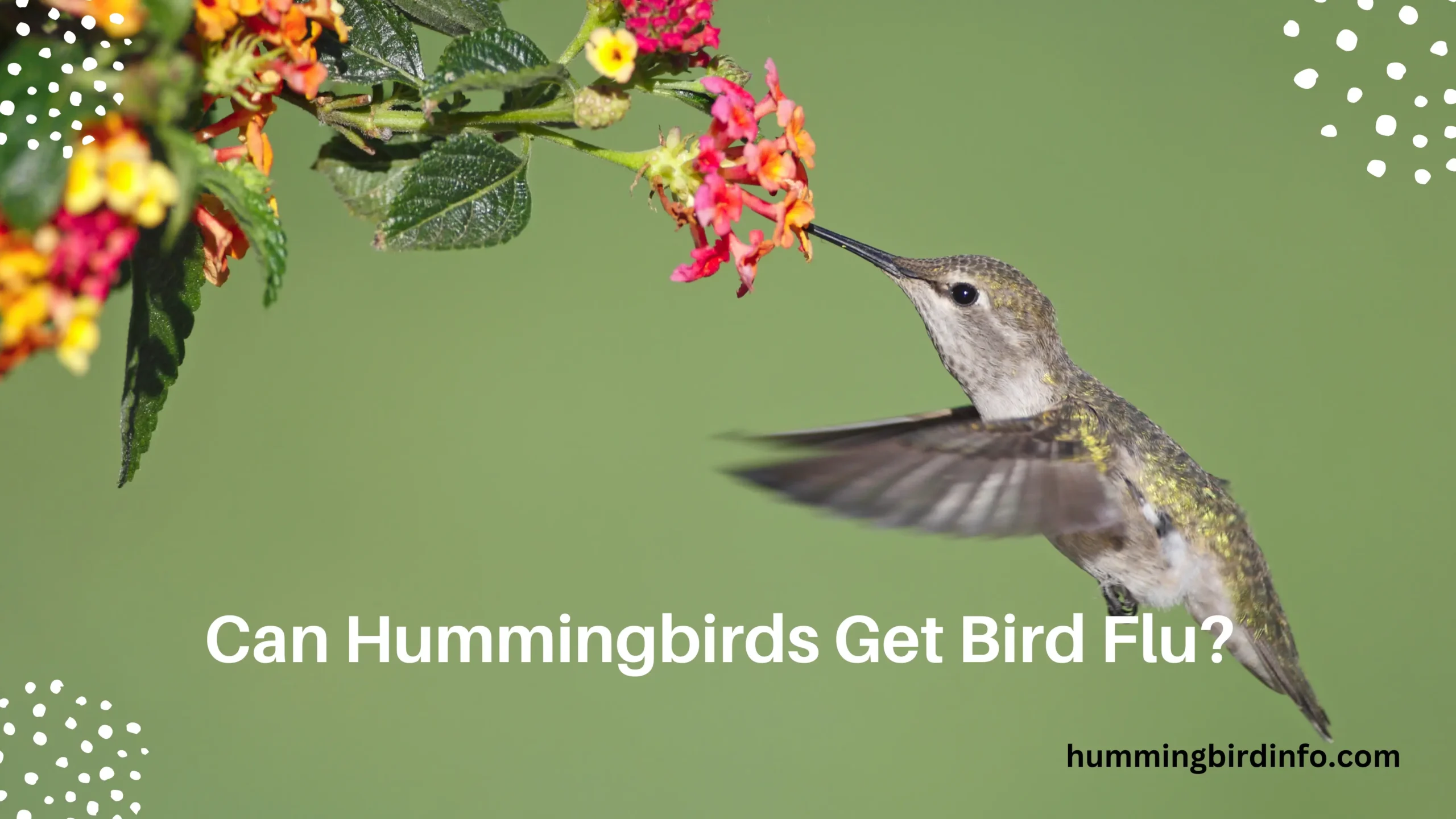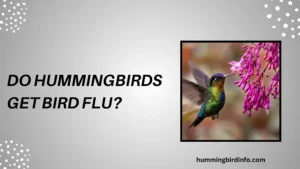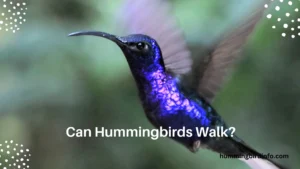As news about bird flu outbreaks spreads globally, backyard bird watchers and wildlife lovers are starting to ask a serious question: Could hummingbirds be at risk too?
These tiny, energetic creatures seem so distant from the poultry farms and wetland birds that usually make the headlines—but they still share the skies, feeders, and gardens.
Hummingbirds are wildlife favorites, often found hovering near colorful flowers or sipping nectar from feeders just feet from our windows. Their proximity to humans and other birds raises valid concerns about their susceptibility to avian influenza.
The possibility that something as devastating as bird flu could reach these delicate creatures makes the topic both timely and important.
In this article, we’ll unpack the truth behind hummingbirds and bird flu, separating myth from science. We’ll explore the virus itself, how it spreads, what species are most vulnerable, and whether your backyard feeder could pose a hidden threat.
By the end, you’ll have a clearer picture of how to protect your feathered visitors—and why their health matters more than ever.
Contents
- 1 Avian Influenza – The Basics
- 2 Bird Species Susceptibility
- 3 Potential Risks to Hummingbirds
- 4 Hummingbird Feeders and Disease Transmission
- 5 Conservation and Future Research
- 6 Conclusion
- 7 FAQs
- 7.1 1. Can hummingbirds catch bird flu from other birds?
- 7.2 2. Are there any confirmed cases of hummingbirds getting bird flu?
- 7.3 3. Is it safe to put up hummingbird feeders during a bird flu outbreak?
- 7.4 4. Can hummingbirds transmit bird flu to humans?
- 7.5 5. Should I take my feeder down if bird flu is reported in my area?
- 7.6 6. Do hummingbirds interact with birds that carry bird flu?
Avian Influenza – The Basics
Avian influenza, also known as bird flu, is caused by influenza A viruses that naturally occur among birds. These viruses vary in severity, with low-pathogenic (LPAI) strains causing mild symptoms and high-pathogenic (HPAI) strains leading to death in severe cases.
Viruses are named based on their hemagglutinin (H) and neuraminidase (N) proteins, like H5N1 or H7N9. These different subtypes can impact birds differently, depending on species, immunity, and environment.
Bird flu spreads through direct contact with infected birds or indirect contact with contaminated droppings, feathers, or feeders. Waterfowl, like ducks and geese, are known carriers and can transmit the virus across vast areas during migration.
Bird Species Susceptibility
Species most affected by HPAI include ducks, geese, swans, and domestic chickens and turkeys. These birds often show high mortality rates and help spread the virus over long distances.
Songbirds and backyard birds, such as sparrows and finches, are less likely to contract HPAI, but isolated cases have occurred. This suggests a lower—but not zero—level of risk for common feeder visitors.
Hummingbirds fall into a unique category. Their nectar-based diet and solitary behavior reduce direct exposure. While no confirmed bird flu outbreaks have been recorded in hummingbirds, lack of research leaves some questions unanswered.
Potential Risks to Hummingbirds
While hummingbirds are not known to be primary carriers of bird flu, some indirect risks still exist. A dirty feeder visited by other birds could, in theory, be a source of viral contact for hummingbirds.
They may also be exposed if they consume small insects that carry particles of the virus. However, this is a low-probability route due to the hummingbird’s limited interaction with infected sources.

The biggest concern lies in virus mutation. If the flu adapts to affect a broader range of birds, species like hummingbirds could eventually face greater exposure—especially in dense urban or migratory areas.
Hummingbird Feeders and Disease Transmission
Hummingbird feeders, while a joy to watch, can become disease hotspots if not properly cleaned. Bacteria, fungi, and possibly viruses can thrive in sugar water that sits out too long.
Regular cleaning with a diluted bleach solution (1 part bleach to 9 parts water) or a vinegar mix is essential. Feeders should be rinsed thoroughly and cleaned every 2–3 days, especially in warmer months.
Proper feeder placement also helps. Avoid placing feeders near perches used by large birds. If you notice sick birds, remove the feeder immediately and clean it thoroughly before reuse.
Conservation and Future Research
Hummingbirds are key pollinators in many ecosystems, contributing to the growth of plants and biodiversity. Keeping them healthy protects far more than just their species.
Because of limited studies, there’s a need for ongoing research into whether hummingbirds are vulnerable to emerging viruses like HPAI. Field surveillance and lab testing will play a vital role in this.
Until more is known, we should take a precautionary approach: clean feeders often, support native habitats, and monitor hummingbird health. These actions protect both the birds and the ecosystems they serve.
Conclusion
Though hummingbirds have not been identified as major carriers of bird flu, the risk—however small—should not be ignored. Their unique biology and habits offer some protection, but viruses are known to evolve.
Maintaining clean hummingbird feeders is one of the easiest ways to prevent disease, whether viral, fungal, or bacterial. It also shows respect for the wildlife that graces our gardens and forests.
Ultimately, these tiny creatures remind us how delicate and interconnected nature really is. By staying informed and acting responsibly, we help ensure their wings keep buzzing from flower to flower for years to come.
FAQs
1. Can hummingbirds catch bird flu from other birds?
Direct transmission is unlikely, but contamination from shared feeders or nearby infected birds might pose a small risk.
2. Are there any confirmed cases of hummingbirds getting bird flu?
As of now, there are no documented cases of hummingbirds contracting avian influenza in scientific literature.
3. Is it safe to put up hummingbird feeders during a bird flu outbreak?
Yes, but clean your feeders regularly—every 2–3 days—with bleach or vinegar solution to minimize all disease risks.
4. Can hummingbirds transmit bird flu to humans?
There’s no evidence that hummingbirds transmit bird flu to people. The strains that affect humans usually come from poultry.
5. Should I take my feeder down if bird flu is reported in my area?
If local wildlife agencies recommend it, remove feeders temporarily—especially if sick birds are seen nearby.
6. Do hummingbirds interact with birds that carry bird flu?
Not commonly. Their solitary behavior and diet reduce interaction with species like ducks and geese that carry the virus.








